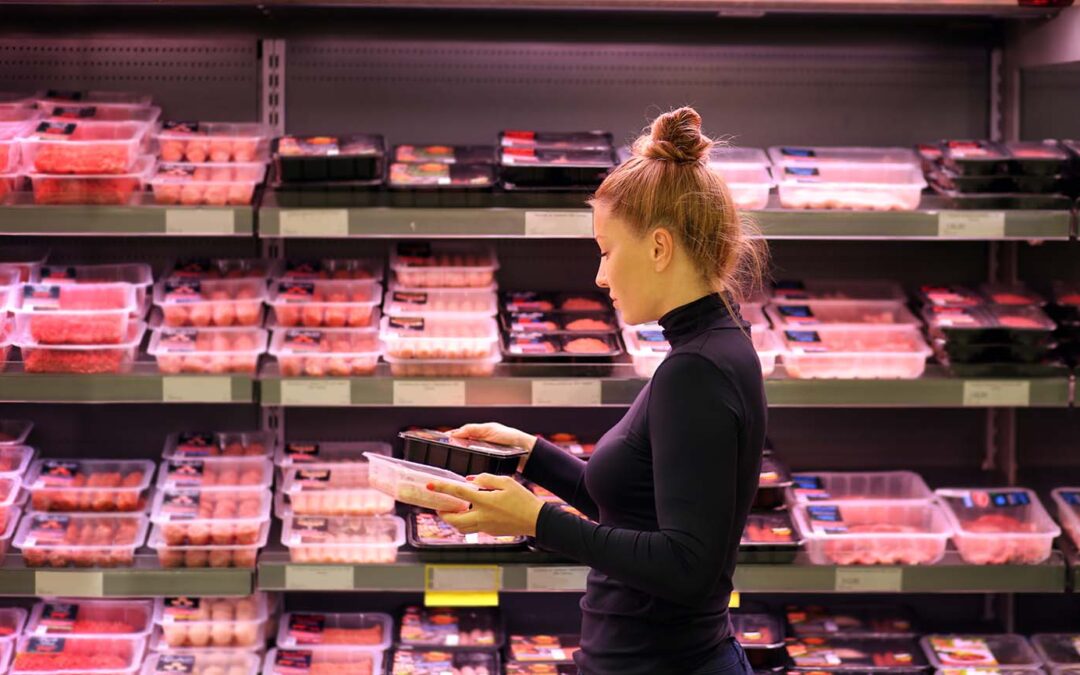Food safety and Quality
Food packaging is evolving from simply extending shelf life to preserving food quality. Food quality and nutritional benefits are inextricably linked to product freshness. Maintaining food product quality at its highest level is vital to get the maximum shelf-life and provide safe food for customers. One of the leading causes of compromised food quality often stems from failed packaging. Therefore, extensive research on product and packaging development has been conducted to ensure food packaging is secure, and safe and maximises the shelf life.
What is the role of food packaging?
Packaging is a means of delivering food safely to the consumer in sound condition at optimum cost. Some of the basic functions include:
Protection: The packaging must ensure the product is protected against mechanical damage when transporting the product from the manufacturer to the store and then from store to the customer’s house Hence, product packaging must be reliable and sturdy.
Preservation: Hurdle technology is a combination of different preservation techniques to create safe, stable, yet nutritious foods. Packaging is an important hurdle in food preservation and safety. Vacuum packing and modified atmosphere packaging (MAP) are two examples of food packaging which incorporates hurdle technology. The factors include aw, pH, redox-potential (Eh) and MAP which all have the ability to help extend shelf life (Robinson, 2014).
Promotion: Packaging informs the customer of the product with a description, nutritional information and ingredients on the packaging and displays the product within. Good packaging and interesting aesthetics will attract the attention of potential customers and can be influential in the decision to purchase a product.
Packaging plays a vital role throughout the supply chain therefore when a pack fails it can cause the product to spoil and lead to a huge amount of frustration and lost revenue. For example, MAP packaging fails due to three main reasons 1) No or wrong gas 2) Sealed properly 3) packaging failure. Pack failures are detrimental throughout the supply chain, therefore manufacturers and retailers must:
- Ensure the highest level of quality control throughout the supply chain
- Prevent customer dissatisfaction and product returns
- Minimise product waste
- Meet customer demands and quality requirements

Packaging and Food Waste
A specific level of food packaging is required to help minimise food waste throughout the supply chain and save costs. The difference in food wastage between less developed and developed countries is significant with 30-40% of food produced is wasted in less developed countries. This is due to inadequate means of preservation, protection, storage and transportation (World Health Organisation). In developed countries, where modern processing, packaging and distribution systems are commonplace, food wastage before it reaches the consumer is around 3% (Coles, 2003).

Modified Atmosphere Packaging
MAP modifies the air inside the package to extend the shelf life of fresh food products. The most commonly used gases include carbon dioxide, oxygen and nitrogen, although this depends on the product. For example, oxygen is generally used to package red meat products as it maintains the myoglobin levels to keep the meat bright red. However, rips, punctures or incomplete seals resulting from issues throughout the supply chain damage the seal integrity of the package and ultimately impact product quality.
Benefits of Modified Atmospheres
Longer shelf life/ higher quality
With MAP, food is packaged under a protective atmosphere which slows down the chemical reactions that cause product deterioration. Combined with continuous cooling, MAP can significantly improve the freshness and can result in a shelf life of 2 to 5 times greater than packages with regular air. Normally, MAP products keep a high quality over a long time and arrive at the consumer in the best possible condition.
Reduces Waste
Due to MAP’s ability to maintain quality control through the packaging process, it can also increase the shelf life and thus help aid in eliminating the waste of spoiled food.
Greater sales opportunities
Due to the longer shelf life, MAP opens up wider geographic markets to manufacturers as longer shipment distances can be achieved.
Fewer preservatives
Packaging under a protective atmosphere extends the shelf life of food, meaning in many cases that the use of preservatives can be reduced or even completely eliminated.
Modified Atmosphere Market
The MAP packaging market was valued at $12.67 billion in 2020, and it is forecasted to continue to grow over the next 5 years (Mordor Intelligence, 2021). As a result of COVID, the market experienced supply chain disruptions as the world went into lockdown and the demand for packaged food grew immediately the demand for modified atmosphere packaging market grew simultaneously.
The panic buying and stockpiling from consumers resulted in food that lasts longer and therefore this demand put pressure on food manufacturers to increase the shelf life. Therefore MAP became a crucial part of food packaging.
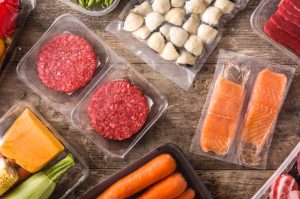
Why Failure Testing Essential for MAP Food Packaging?
The standards required by MAP are high and have to be controlled and monitored to ensure safety. Therefore, food manufacturers rely on modern MAP gas technology and various levels of quality assurance for maximum process safety.
Pack failure testing is an essential step in quality control as a loss of oxygen or air may cause early degradation and decay of food quality and thus food waste. Compromised seal integrity causes the leak of biological, chemical and physical contamination into the packages that may accelerate products’ decomposition. For example, if a product packed in an modified atmosphere, and the gas was to leak this would result in food spoilage at a faster rate than if there was no leak.
Consumers want to have their expectations met when purchasing packaged foods. They do not want to see discoloured or damaged packaging on the grocery store shelves. Not only can this result in the loss of capital, but also can cause customers to lose faith in the brand of the product itself. Food manufacturers spend time and energy on building their brand. It can be catastrophic when a mishap such as an illness or contamination has slipped past quality control and made it into the supermarket aisle. The MAP food preservation technique prolongs product shelf life, which directly and positively impacts the profitability and marketability of a food business.
Common Methods to Test for Failed Packs
Common methods to conduct failure testing used by manufacturers are destructive gas analysis and underwater leak testers. The current industry standard for MAP failure testing is for quality control personnel to randomly pick any number of products to check the pack’s integrity.
Headspace gas analysis
Headspace analysis is performed by inserting a needle into the packaging and drawing a small amount of gas into the analyser. It measures the concentration of the remaining oxygen or carbon dioxide. These tests are carried out to ensure the headspace gas mixture is correct so that the contents in the packaging have the optimal environment to be preserved for as long as possible. This destructive method is commonly used by manufacturers however it results in a low rate of testing at < 0.05% of all MAP packs are tested and of those tested, they need to be discarded due to the destructive piercing of the pack.
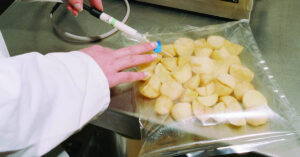
Water bath integrity test
To test for leaks in packs, the manufacturer submerges packages in water and places it under a vacuum. The system is typically encased in a transparent acrylic case to allow for visual observation. If there are leaks in the packaging, a stream of bubbles will rise from the location of the leak. This allows the operator to pinpoint the location where the packaging leaks and allows them to make adjustments to the setting of the equipment. However, the tested packages have to be discarded after each test regardless of the results. This would incur a large amount of waste and financial loss, especially if the factory conducts thousands of tests per day.
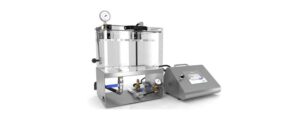
Modern Systems for Testing for MAP
Modern leak testing technology needs to strive for in-line, non-invasive measurement of MAP and step away from the current methods of batch, off-line testing which result in reduced quality control and increased waste. An example of a leading modern leak testing technology is Senoptica’s technology which can non-invasively measure the optical sensors printed on film for MAP.
Benefits of Modern Methods for Failed MAP Testing
Due to the drive toward increased traceability, reduced food waste and improved food quality, modern methods of leak testing equipment for food packaging must be non-destructive and in-line to identify faulty packs. Senoptica’s technology is one of the first non-invasive, in-line, oxygen measurement systems for MAP. This system can check the oxygen content and seal integrity of every single pack on the packaging line. Features of this in-line system include
- Rapid in-line detection
- Only individual packs are rejected rather than whole batches
- Increased compliance with customer specifications.
- Digitisation and Industry 4.0
Find additional features and an overview of the benefits, on our Solution page.
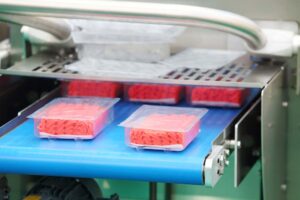
Digitisation and Food Security
Food safety demands are being made by consumers, retailers, regulators and stakeholders to raise the level of food protection around the world. These demands have risen to prominence in the last few years due to several reasons including a growing population, scarcity of natural resources, globalisation, sustainability and advances in modern technology.
Industry 4.0, smart manufacturing and the Industrial Internet of Things (IIoT) are becoming increasingly common. Food manufacturers are using robots to automate tasks, virtual reality for machine maintenance, track and trace technology for better traceability and transparency. Digitisation is a positive way to transform food safety, increase supply chain traceability and make food safe.
In-line Packaging Innovations are Improving Traceability and Food Quality
MAP plays a large role in overall food safety monitoring for the benefit of the food manufacturer and consumer. As the food supply chain is becoming increasingly complex and demanding in terms of regulatory requirements; traceability and security in packaging is now very important. In-line systems, improve traceability throughout the supply chain as 100% of food has been measured for the correct gas levels and leaks before the pack continues through the supply chain and is on retail shelves.
Fill out the contact form below to find out more

